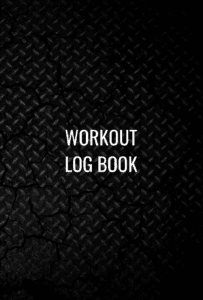If you want a proven way to increase motivation and improve consistency with your workouts, there are few things as impactful as planning and recording your workouts in a training log.
In fact, planning and recording your workouts is such a powerful training tool that Dorian Yates—six times Mr Olympia—wrote down every workout he ever did from 1984 to 1997.
But why keep a training log? How can this simple tool be so effective?
Here’s a look at a few of the most beneficial reasons.
Accountability
First and foremost, planning and recording your workouts will help hold you accountable. There is great power in the written word and our mind establishes a richer, deeper connection with the words we write than the words we simply read. In neuropsychology this phenomenon is called the “generation effect” and scientists have found that people have significantly better recall for information that they’ve created themselves than for something that they’ve read. And by leveraging this effect, not only does this keep your workout top of mind, it also elevates the importance of this information and helps to hold you accountable to your goals.
Motivation
Motivation is an energy source that is all too easy to easy to use up. And wandering into the gym with no clear plan of attack can quickly drain your motivational reserves. By writing out your workouts ahead of time, not only do you go into the gym with a concrete plan, you also have specific targets to aim for. And this last part is critical, because whether it’s one more pound or one more rep, striving for incremental progress across training sessions remains fundamental to driving physiological adaptation—i.e. building muscle.
Consistency
In game theory there is the concept of “a streak” — a run of actions or events that invariably results in a reward. And it is a very powerful mechanism for driving engagement and consistency. By tracking our workouts we can leverage this mechanism to our advantage, striving to maintain the progress streak in our training and stay consistent with our plan.
Insight
Every time we log our performance in the gym we are gathering data. And with the right eye, that data can hold significant insights about our workouts and overall performance in the gym. For example, looking back through the data you might learn that you perform better when you warm-up first or that your performance drops significantly once you break through twenty sets in a given workout. Armed with this information, you can make small adjustments in the planning and execution of your workouts to further advance your progress.
How and where to track?
Long before the availability of mobile phones and laptop computers, a workout journal was nothing more than a simple notebook or exercise book. You know, the sort of thing you used to take to school.
However, there are now a myriad of mobile apps with both paid and free versions that will allow you to plan and record your workouts. And some of them are actually pretty good.
However, there are downsides to digital tracking—especially in a proprietary app.
The biggest of these is distraction. Too many workouts are already plagued by digital interruption—the constant ding of messaging, or that sneaky scroll through IG for inspiration that can extend a rest interval from thirty seconds to five minutes or more. So unless you are particularly disciplined around your digital devices, I suggest leaving your phone in your gym bag and opting for a paper log book instead.
Preprinted Training Logs
Some of you might get a thrill from starting with an empty page every time. However, there are now many preprinted training log books that provide you with a structured way to plan and record your workouts. Of course quality matters, and some of these workout logs have clearly been created by someone that has never set foot in a gym.
For example, I’ve seen way too many log books that don’t have enough room for the fundamentals, like a big space for exercises, or they capture too few sets. I’ve even seen some logs that capture body part measurements on every workout page.
To that end, I decided I’d design and print my own workout log book—a training journal that actually looks like it was written by someone that works out. And while it’s far from perfect, it’s cheap as chips and ticks all the major boxes that make a journal effective and easy to use.
- Compact 6″ x 9″ size so it fits in your gym bag
- 120-pages captures up to six months of training progress
- Record key measures and milestones every week
- Plan and track up to 15 movements and 6 sets of reps/weight each training session
- Add free form notes for every workout
- No motivational fluff, filler or other nonsense
You can buy a copy of my workout log book for yourself on Amazon, make your own or try one of the many digital apps. But if you’re not currently tracking your workouts, I strongly recommend that you start as soon as possible.
To your success!
